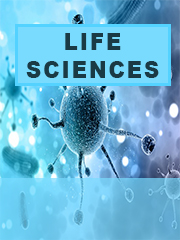Report overview
There are several key classes of plant-derived anticancer agents in the market today, the?vinca alkaloids?(vinblastine,?vincristine?and vindesine), the epipodophyllotoxins (etoposide and?teniposide), the taxanes (paclitaxel?and docetaxel) and the camptothecin derivatives (camptotecin?and?irinotecan).
This report aims to provide a comprehensive presentation of the global market for Plant Sources Anti Cancer Agents, with both quantitative and qualitative analysis, to help readers develop business/growth strategies, assess the market competitive situation, analyze their position in the current marketplace, and make informed business decisions regarding Plant Sources Anti Cancer Agents. This report contains market size and forecasts of Plant Sources Anti Cancer Agents in global, including the following market information:
Global Plant Sources Anti Cancer Agents Market Revenue, 2018-2023, 2024-2030, ($ millions)
Global Plant Sources Anti Cancer Agents Market Sales, 2018-2023, 2024-2030, (MT)
Global top five Plant Sources Anti Cancer Agents companies in 2022 (%)
The global Plant Sources Anti Cancer Agents market was valued at US$ million in 2022 and is projected to reach US$ million by 2030, at a CAGR of % during the forecast period. The influence of COVID-19 and the Russia-Ukraine War were considered while estimating market sizes.
The U.S. Market is Estimated at $ Million in 2022, While China is Forecast to Reach $ Million.
Paclitaxel Segment to Reach $ Million by 2030, with a % CAGR in next six years.
The global key manufacturers of Plant Sources Anti Cancer Agents include Phyton, ScinoPharm, Novasep, Samyang, Polymed, TAPI (Teva), Fresenius-kabi, Huiang biopharma and Southpharma, etc. in 2022, the global top five players have a share approximately % in terms of revenue.
We surveyed the Plant Sources Anti Cancer Agents manufacturers, suppliers, distributors and industry experts on this industry, involving the sales, revenue, demand, price change, product type, recent development and plan, industry trends, drivers, challenges, obstacles, and potential risks.
Total Market by Segment:
Global Plant Sources Anti Cancer Agents Market, by Type, 2018-2023, 2024-2030 ($ Millions) & (MT)
Global Plant Sources Anti Cancer Agents Market Segment Percentages, by Type, 2022 (%)
Paclitaxel
Vinorelbine
Irinotecan
Hydroxycamptothecin
Docetaxel
Other
Global Plant Sources Anti Cancer Agents Market, by Application, 2018-2023, 2024-2030 ($ Millions) & (MT)
Global Plant Sources Anti Cancer Agents Market Segment Percentages, by Application, 2022 (%)
Ovarian Cancer
Cervical Cancer
Breast Cancer
Other
Global Plant Sources Anti Cancer Agents Market, By Region and Country, 2018-2023, 2024-2030 ($ Millions) & (MT)
Global Plant Sources Anti Cancer Agents Market Segment Percentages, By Region and Country, 2022 (%)
North America
US
Canada
Mexico
Europe
Germany
France
U.K.
Italy
Russia
Nordic Countries
Benelux
Rest of Europe
Asia
China
Japan
South Korea
Southeast Asia
India
Rest of Asia
South America
Brazil
Argentina
Rest of South America
Middle East & Africa
Turkey
Israel
Saudi Arabia
UAE
Rest of Middle East & Africa
Competitor Analysis
The report also provides analysis of leading market participants including:
Key companies Plant Sources Anti Cancer Agents revenues in global market, 2018-2023 (Estimated), ($ millions)
Key companies Plant Sources Anti Cancer Agents revenues share in global market, 2022 (%)
Key companies Plant Sources Anti Cancer Agents sales in global market, 2018-2023 (Estimated), (MT)
Key companies Plant Sources Anti Cancer Agents sales share in global market, 2022 (%)
Further, the report presents profiles of competitors in the market, key players include:
Phyton
ScinoPharm
Novasep
Samyang
Polymed
TAPI (Teva)
Fresenius-kabi
Huiang biopharma
Southpharma
Yunnan Hande
Hainan Yew Pharm
Jiangsu Yew Biotechnology
West-Ward Pharmaceuticals
Pfizer
Actiza Pharmaceutical
Getwell
Taj Pharma
Cipla
Salius
Outline of Major Chapters:
Chapter 1: Introduces the definition of Plant Sources Anti Cancer Agents, market overview.
Chapter 2: Global Plant Sources Anti Cancer Agents market size in revenue and volume.
Chapter 3: Detailed analysis of Plant Sources Anti Cancer Agents manufacturers competitive landscape, price, sales and revenue market share, latest development plan, merger, and acquisition information, etc.
Chapter 4: Provides the analysis of various market segments by type, covering the market size and development potential of each market segment, to help readers find the blue ocean market in different market segments.
Chapter 5: Provides the analysis of various market segments by application, covering the market size and development potential of each market segment, to help readers find the blue ocean market in different downstream markets.
Chapter 6: Sales of Plant Sources Anti Cancer Agents in regional level and country level. It provides a quantitative analysis of the market size and development potential of each region and its main countries and introduces the market development, future development prospects, market space of each country in the world.
Chapter 7: Provides profiles of key players, introducing the basic situation of the main companies in the market in detail, including product sales, revenue, price, gross margin, product introduction, recent development, etc.
Chapter 8: Global Plant Sources Anti Cancer Agents capacity by region & country.
Chapter 9: Introduces the market dynamics, latest developments of the market, the driving factors and restrictive factors of the market, the challenges and risks faced by manufacturers in the industry, and the analysis of relevant policies in the industry.
Chapter 10: Analysis of industrial chain, including the upstream and downstream of the industry.
Chapter 11: The main points and conclusions of the report.
